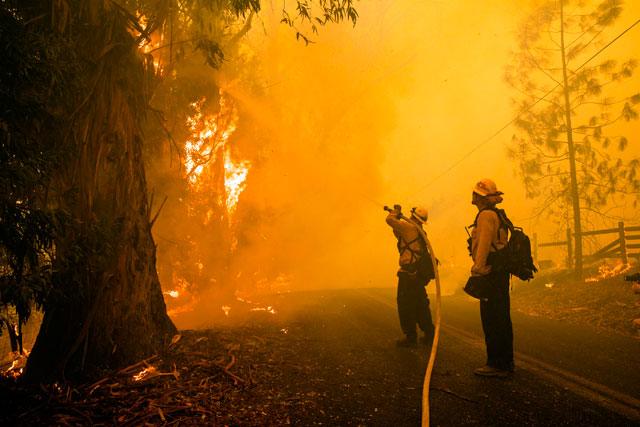
California is once again facing a devastating wildfire season, with multiple fires blazing across the state, forcing thousands of residents to evacuate their homes. As of today, Governor Gavin Newsom has declared a state of emergency, triggering an all-hands-on-deck response to combat the rapidly spreading fires and protect communities at risk.
The declaration of a state of emergency mobilizes additional resources to support firefighting efforts, including personnel, equipment, and funding. Local, state, and federal agencies are working together to control the blazes, which have been fueled by extreme heat, strong winds, and dry vegetation. The situation has been exacerbated by prolonged drought conditions in much of the state, creating a perfect storm for dangerous fire activity.
Fires Threaten Homes and Communities
Among the hardest-hit regions are northern and central California, where multiple large wildfires have burned through thousands of acres. Some of the most significant fires include the River Fire near the Central Valley and the Sierra Nevada foothills, as well as the Caldor Fire, which threatens communities around South Lake Tahoe.
Evacuation orders have been issued for several towns, with residents being urged to leave immediately to ensure their safety. Shelters have been set up in various locations to accommodate evacuees, while firefighters work around the clock to contain the flames. Local authorities have stressed the importance of heeding evacuation warnings, as fire behavior can change quickly, putting lives at risk.
The Impact of Climate Change on Wildfires
The increase in the frequency and intensity of wildfires in California has been closely linked to climate change. Warmer temperatures, prolonged droughts, and reduced snowpack levels have all contributed to creating ideal conditions for wildfires. These environmental factors have turned what was once considered “wildfire season” into a year-round threat for many parts of the state.
Experts warn that without significant efforts to address climate change, wildfires in California are likely to become even more destructive in the years to come. In recent years, fires have grown larger and more difficult to control, leading to billions of dollars in damages and the loss of both human and animal lives. The fires also contribute to poor air quality across large regions, posing additional health risks to residents.
Emergency Response and Prevention Efforts
Firefighters from across California, neighboring states, and federal agencies have been deployed to contain the blazes. In addition to ground crews, aerial firefighting resources, including helicopters and planes, are being used to drop water and fire retardant on the flames. Despite these efforts, fire containment remains challenging due to the unpredictable nature of the winds and the difficult terrain in many areas.
Governor Newsom has emphasized the importance of continued investment in fire prevention measures, including forest management and community preparedness programs. These efforts aim to reduce the risk of future wildfires and minimize their impact on communities. However, with California facing another difficult fire season, it is clear that long-term solutions are needed to address the growing threat of wildfires in the state.
Conclusion
As wildfires continue to rage across California, the state’s emergency declaration serves as a stark reminder of the dangers posed by natural disasters in an era of climate change. While the immediate priority is to protect lives and property, there is a growing recognition that comprehensive action is needed to prevent future catastrophes. For now, firefighters and residents are bracing for what could be another long and destructive fire season.
image source – AFP photos


